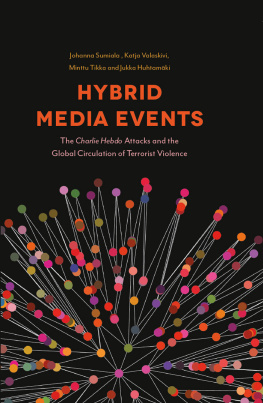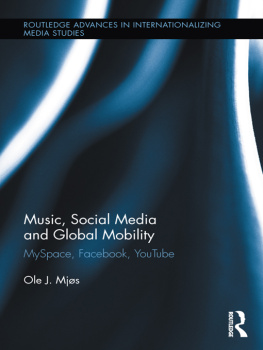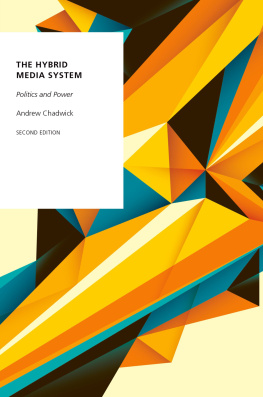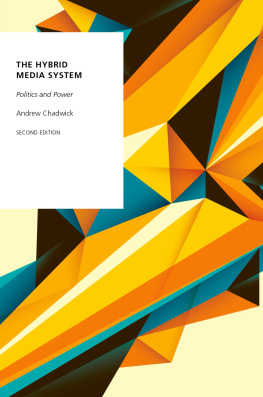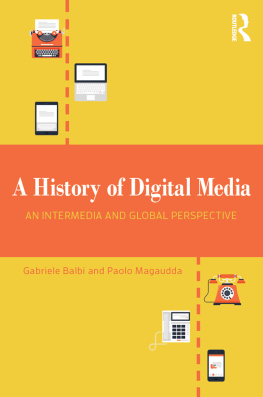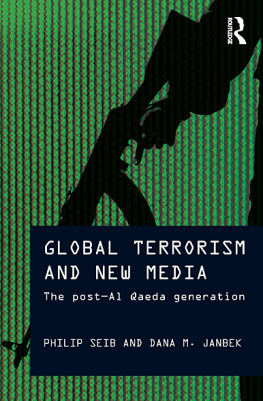HYBRID MEDIA EVENTS
The Charlie Hebdo Attacks and the
Global Circulation of Terrorist Violence
HYBRID MEDIA EVENTS
The Charlie Hebdo Attacks and the
Global Circulation of Terrorist Violence
BY
JOHANNA SUMIALA
University of Helsinki, Helsinki, Finland
KATJA VALASKIVI
University of Tampere, Tampere, Finland
MINTTU TIKKA
University of Helsinki, Helsinki, Finland
JUKKA HUHTAMKI
Tampere University of Technology, Tampere, Finland

Emerald Publishing Limited
Howard House, Wagon Lane, Bingley BD16 1WA, UK
First edition 2018
Copyright 2018 Emerald Publishing Limited
Reprints and permissions service
Contact: permissions@emeraldinsight.com
No part of this book may be reproduced, stored in a retrieval system, transmitted in any form or by any means electronic, mechanical, photocopying, recording or otherwise without either the prior written permission of the publisher or a licence permitting restricted copying issued in the UK by The Copyright Licensing Agency and in the USA by The Copyright Clearance Center. Any opinions expressed in the chapters are those of the authors. Whilst Emerald makes every effort to ensure the quality and accuracy of its content, Emerald makes no representation implied or otherwise, as to the chapters suitability and application and disclaims any warranties, express or implied, to their use.
British Library Cataloguing in Publication Data
A catalogue record for this book is available from the British Library
ISBN: 978-1-78714-852-9 (Print)
ISBN: 978-1-78714-851-2 (Online)
ISBN: 978-1-78743-916-0 (Epub)

Contents
List of Figures
Chapter 2
Chapter 3
List of Tables
Chapter 3
List of Photographs
Chapter 2
Chapter 4
About the Authors
Johanna Sumiala, PhD, is Associate Professor of Religion and the Digital World at the Faculty of Theology, University of Helsinki. She is an expert in the fields of media sociology and media anthropology, digital ethnography and visual culture. She has recently published articles on mediatized violence and ritualized (online) communication, and she is the author of the book Media and Ritual: Death, Community and Everyday Life (2013).
Katja Valaskivi, Associate Professor (Docent), is the Research Director of Tampere Research Centre for Journalism, Media and Communication (COMET) and Vice Dean of the Faculty of Communication Sciences (COMS) at the University of Tampere, Finland. She is a media scholar, who has published widely in the issues of media and the nation, nation branding and circulation in media society. The title of her most recent book is Cool Nations: Media and the Social Imaginary of the Branded Country (2016).
Minttu Tikka is a PhD Candidate at the Department of Social Research/Media and Communication Studies, University of Helsinki. She is interested in developing methods for studying internet and social media. She has published issues of crises, terrorism and digital media, YouTube and news and digital ethnography.
Jukka Huhtamki is a Postdoctoral Researcher at Laboratory of Industrial and Information Management, Tampere University of Technology, and at Tampere Research Centre for Journalism, Media and Communication (COMET), Finland. He is also a Co-founder of Innovation Ecosystems Network. He is developing methodology for extracting, analysing and visualizing heterogeneous data for system-level insights on various kinds of socio-technical phenomenon.
Preface
This book has many beginnings, but one stands out above all others: the attack on the Charlie Hebdo offices in Paris on 7 January 2015. When news about the shootings began to pour into our social media feeds, we decided straightaway to start compiling research data. We followed the messaging on Twitter and Facebook, we tracked Finnish and international news sources and we witnessed the appearance of the #JeSuisCharlie hashtag.
Charlie Hebdo was not a chance selection, nor were we interested in the event simply because of the huge attention it attracted. We had already been researching attention for many years, exploring the creation and circulation of attention in a changed media environment: we wanted to understand how things, notions, ideologies and values come into being and how they exercise an impact and influence on the media through circulation. We had also studied the ways in which different actors participate in and the roles they had in these circulation processes. Furthermore, we shared an interest in the different ways that religion is thematized in the media. For years, Johanna had followed and studied violent media events, while Katjas research interest was focused on the global media circulation of different phenomena. Most of this work was grounded in an ethnographic approach, but in this case we wanted to expand and diversify our methodological toolkit. Our ambitious plan, initially, was to collect all the data from all possible sources, to study circulation patterns from one platform to another and to develop methods that combine an ethnographic approach with computational methods. However, we had neither the funding nor the resources to do this.
We, therefore, decided we should assemble a team, start to write funding applications and narrow our perspective. We were joined by Jukka Huhtamki from Tampere University of Technology, who we had worked with before at the Tampere Research Centre for Journalism, Media and Communication COMET; and by Minttu Tikka, with whom Johanna had collaborated for many years. Throughout the project all of us on the team have shared a common commitment to better understand the changes happening in the media environment and the relationship between media and society in general and to develop the tools and research methods we need to achieve this understanding. This team effort is still ongoing.
Thankfully the funding we needed came very quickly. First, we secured a grant from the Helsingin Sanomat Foundation in 2015, mainly for our project Je suis Charlie The symbolic battle and struggle over attention, which was focused on studying the media attention surrounding the attack on the Charlie Hebdo newspaper. Later, in 2017, the Academy of Finland awarded us funding for a project dealing with the relationship between the media and terrorism more generally. This ongoing project is called Hybrid Terrorizing: Developing a New Model for the Study of Global Media Events of Terrorist Violence (HYTE).
However, even though we had the funding in place, it was not until six months after the events in Paris that we could start compiling the research data. As it turned out, data collection and data administration became a long-drawn-out rigmarole that went on for almost three years. Once we get the chance, we will report on this in greater detail. Based on what we have heard, colleagues in other countries seem to have very similar problems when it comes to accessing and administering large datasets. The problem is particularly difficult in cases where we have to rely for data on commercial service providers which we do in order to gain access to social media datasets.

